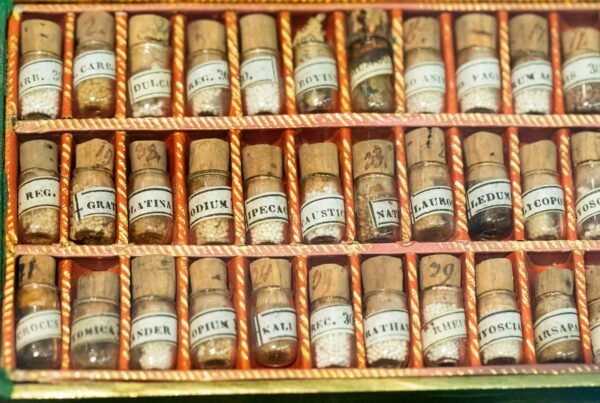Skin brushing, sometimes known as “dry brushing” is an ancient technique (aren’t they the best?) that has been used, in various forms, for thousands of years, across a wide range of cultures including India (where it is still used as part of Ayurveda, referred to as garshana in Sanskrit), China, Ancient Egypt, Rome and Ancient Greece. I don’t know about you, but when I find something that has been in use for a really long time and throughout several different ancient cultures, I pay attention. These days, some people like to mock our ancestors, thinking in their arrogance, that with the developments of modern science, we know so much more. But this is often not the case and if a technique has passed the test of time then I believe it to be worthy of our consideration.
So what’s the deal with dry brushing of the skin? Why do I believe that it should be in every person’s daily routine? Let’s dig in to the three reasons.
Reason #1: Dry brushing helps to eliminate toxins from the body
Detoxification is a hot topic these days, as more and more people realise that the sheer quantity of toxins we are exposed to in our modern world through our food, water and air is having a significant detrimental effect on our health, despite the best efforts of our natural detoxification organs to keep us well.
However, trendy detoxification often focuses on what is known as Level 1 elimination, where we bring toxins out of the cells and tissues of the body and process them in the liver. However, if our Level 2 elimination, where these toxins are removed from the body completely, is not functioning at a high enough level (this is commonly the case), then these freshly released substances will not be able to leave the body and will simply circulate in our blood stream, causing us discomfort and unwanted symptoms before returning to the tissues, potentially leaving us in a worse state than before. It’s important therefore, especially when attempting to remove toxins from cells and tissues, to ensure that our elimination organs are working at their optimum levels. These organs are the ones that ensure the toxins actually leave the body for good: the bowel, kidney, lungs and skin.
The skin is often overlooked as an elimination organ but it is important. Sometimes called the third kidney (because it is able to eliminate many of the same toxins as the kidneys), it is thought to be able to release up to two pounds (almost 1kg) of waste material per day in the form of perspiration. Not everyone actually sweats as much as they should, but skin brushing with a hard, dry brush removes the top layer of skin and helps to get rid of the uric acid, catarrh and other waste acids that our body wants to remove on a daily basis. Don’t worry, we usually grow a new layer of skin every 24 hours anyway, but the brushing assists in removing the dead skin cells and the waste that goes with it and makes the whole process more efficient. This significantly reduces the work load of the kidneys too.
P.S. many people now wear clothes made of synthetic fibres (bad idea). One of the issues with these clothes is that they make it harder for the skin to “breathe”. On a physical level, this means that wearing these fabrics makes it harder for the skin to sweat and synthetic fabrics do not absorb toxins and waste materials from the body as well as natural fibres do, meaning that our skin could really do with some extra help!
Reason #2: Assists in removing toxins from the cells through stimulating flow of the lymph
The lymphatic system is a vital part of our body’s functioning that is often overlooked. Not only does it carry some nutrients to cells from the blood stream, but most importantly, the lymphatic system is responsible for removing all of the waste products from each cell in our bodies. Without a efficiently functioning lymphatic system, the waste will accumulate in and around the cells of our body and sickness will inevitably result. Just think of our streets when the waste collection workers go on strike! Lymph under-activity can lead to issues with the immune system, joints (especially rheumatic issues), and chronic illness. Unlike the blood stream, the lymph does not have the luxury of a huge pump making sure it gets where it needs to go. The lymph relies solely upon movement and contraction of the muscles or manual stimulation of the body. This is one of the reasons why movement and exercise are so important. Brushing the skin with a hard brush enables this fluid to flow and helps it to perform its job most efficiently. Dry brushing the skin also (unsurprisingly) assists with improving blood circulation for similar reasons.
Reason #3: It’s a great way to start the day
Daily dry brushing of your skin is a smart addition to one’s daily morning routine. It gives you a chance to practice some (often neglected) self-love and connect with your body. It’s perfect to do right before your morning shower, which will help to rinse off any remaining dead skin and toxins released by the brushing. Especially if you finish your shower with some cold water, you’ll be left feeling energized and invigorated and ready to start your day in the best possible frame of mind and state of body. But if cold water scares you, don’t let that put you off the dry brush!
We’ll cover more morning routine ideas including the cold shower and much more in future articles.
So how does one dry brush/skin brush?
People have different ideas and preferences, but the following broad guidelines apply.
- Use a completely dry, bristle brush. Ideally like the one in the picture at the top of this article, with a long handle to assist in accessing those hard-to-reach areas. Make sure to dry brush when your body is completely dry (an ideal time is before a shower).
- Apply a reasonable pressure to your skin, but not too much. It’s best to start softly and increase this over time so your skin gets used to it, particularly if you have sensitive skin.
- Start at the feet and brush upwards towards the heart. Use long, rhythmic and sometimes circular strokes.
- Continue at the hands up the arms towards the lymph nodes at the armpits.
- Around your stomach area, you may wish to brush upwards on your right side and across then downwards on your left side towards the groin, roughly following the route of the colon. This may help to encourage healthy bowel movements and ease any constipation.
- Make sure you don’t miss any part of the body, going over areas several times and overlapping your strokes.
- Avoid brushing the face, nipples or any areas of irritation including eczema and open wounds – these are all too sensitive.
I recommend to dry brush your skin every day, but you may wish to start with a less frequent regimen until your body becomes accustomed to it. Before you know it, you’ll start to really enjoy brushing your skin and it might become an essential part of your morning routine.
Have you tried dry brushing? Let me know in the comments below and share your experience with this ancient technique.
Recommended further reading/references
Homotoxicology, 1980, Dr Hans-Heinrich Reckeweg.
Dr Jensen’s Guide to Better Bowel Care, 1999, Dr Bernard Jensen
Dr. Jensen’s Nutrition Handbook: A Daily Regimen for Healthy Living, 2000, Dr Bernard Jensen
Yes, I really like Dr Jensen!





One Comment